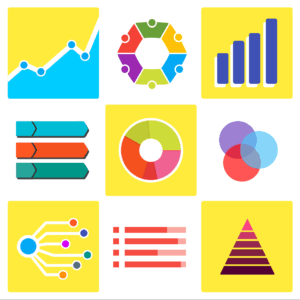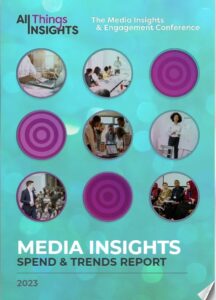The Path to Thought Partnerships
Thought partners bring different skill sets and knowledge to the table, enriching the research process. This might include enhanced creativity and innovation, bouncing ideas off one another and challenging assumptions. This can spark new approaches to the insights process. This in turn can help improve research design, and finetune the collaboration that entails from interpreting the data.
Communication and solid storytelling skills are also key in thought partnerships. Thought partners can work together to translate research findings into clear, compelling narratives and actionable recommendations for stakeholders. These skills can help develop better relationships with stakeholders and guide the process of creating actionable insights that make an impact on the strategic level.
Ideally, thought partnerships in market research means being recognized as an authority in your field. This of course takes some time, and experience. In a survey of senior insights professionals from McKinsey & Company, 65% of businesses say customer insights should be a “thought partner” of the entire organization. However, just 23% say that their companies have already achieved this level of maturity.
Most organizations might not be at that level of thought partnership quite yet, but they are striving to do so. The McKinsey research uncovered that the overwhelming majority of respondents aim to make customer insights a reality for their businesses. However, less than a quarter describe their insights unit as currently serving as a “thought partner” to their organization which is defined as the highest stage of customer insights maturity, while more than three quarters of organizations are still in earlier maturity stages, serving as a counselor or as a service provider.
Still, while there may be a gap, it also signals opportunity. The path to true thought partnerships is one of staying focused on the customer, driving customer experience and innovation and remaining core to the idea of delivering actionable insights that provide value to the organization. Having the right strategy, staying agile in your thought leadership process, and positioning the right team all come into play.
Developing Insights Thought Partnerships
During TMRE 2025, Delicia Cooney, Sr. Director, Consumer & Shopper Insights at Newell Brands, will hold the session, “Beyond the Data: The Art of Thought Partnership.”
Delivering data alone is not enough—true impact comes from being a thought partner. Insights should not only inform but shape conversations and drive strategy. In this session, we’ll explore the art of thought partnership—how to build relationships that foster trust, challenge thinking, and bring unique perspectives to the table. We’ll also discuss how curiosity, collaboration, and equal engagement create stronger partnerships, ensuring you leave with actionable ways to move beyond data delivery and establish yourself as a trusted strategic advisor.
Key takeaways: Position yourself as a thought partner by actively shaping discussions rather than simply responding to requests; build trust and credibility by fostering relationships that encourage open dialogue, challenge thinking, and co-create impactful solutions; and drive meaningful change by anticipating needs, connecting the dots, and leading conversations that guide strategic decisions.
Unleash the Power of Insights
Building a superior insights capability to drive thought leadership does not happen overnight. It’s critical to have a customer-centric and growth mindset, while staying on top of emerging technologies that can help improve and streamline operations. Strengthening the data and analytics structure of the insights organization can help pave the way to stronger insights thought partnerships.
Ultimately, thought partnerships are a mutually beneficial collaboration between individuals, teams and business units. As Shayla Thiel-Stern puts it in her LinkedIn blog, “Why you need a thought partner and how to identify one,” “Whether you work alone at home or in a corporate office with thousands of other people, it’s so helpful to find someone who can listen to your ideas, offer new ones and build upon them – and who will come to you to do the same. Although you can brainstorm all by yourself with a white board or a blank note pad, it’s a whole lot more fun (not to mention productive) to invite someone else to the party. And it’s fun to be invited to their party.”
Video courtesy of Dr. Grace Lee
Contributor
-

Matthew Kramer is the Digital Editor for All Things Insights & All Things Innovation. He has over 20 years of experience working in publishing and media companies, on a variety of business-to-business publications, websites and trade shows.
View all posts



































































































































